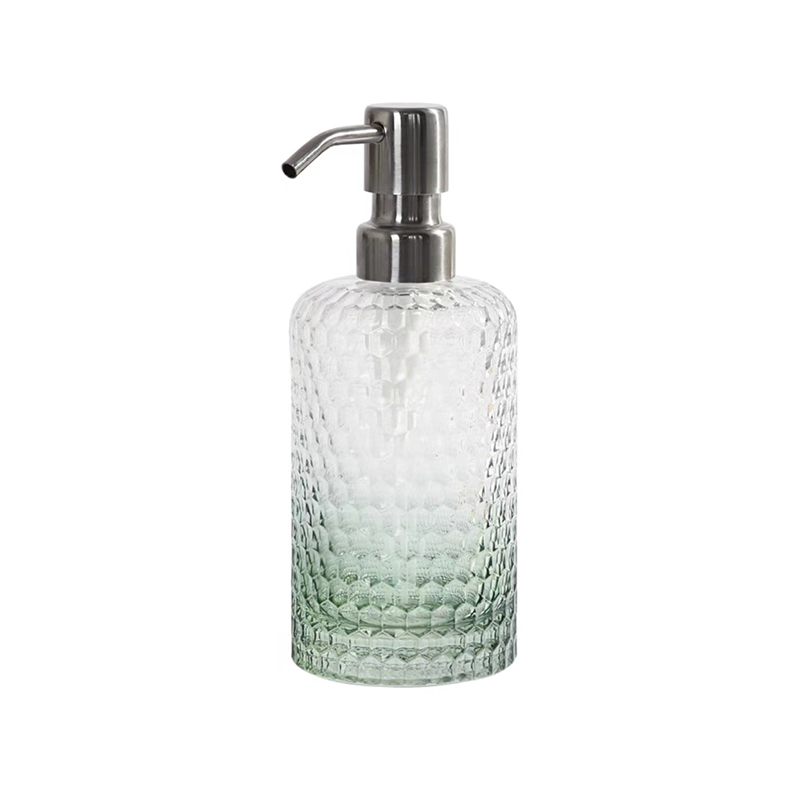During daily use, how to properly clean and maintain the Bathroom Bottle to avoid bacterial growth?
In daily life, bathroom bottles are items that we frequently touch and use. They are often used to hold liquid cleaning products such as shampoo, shower gel, hand soap, and conditioner. Because the bathroom environment is usually humid and poorly ventilated, and the bottle body is exposed to moisture, hand bacteria, and microorganisms in the air, it is very easy to become a breeding ground for bacteria. Therefore, mastering the correct cleaning and maintenance methods is essential to maintain hygiene and extend the service life.
Regularly cleaning the bottle body and pump head is the most basic maintenance step. It is recommended to clean it at least once a week. You can remove the bottle and gently clean the surface of the bottle body with warm water and neutral detergent, especially the bottle mouth and bottom, where scale and soap residue are most likely to accumulate. The pump head part should be unscrewed and cleaned separately, flush the pipe with water and clean the gap with a fine brush (such as an old toothbrush) to ensure that there is no solidified detergent blocking or bacteria breeding.
Before refilling the detergent each time, be sure to completely empty and clean the residue in the bottle. Many people are used to adding new products directly when the original liquid is not used up. Although this practice is convenient, it is easy to cause cross-contamination of the liquid in the bottle, accelerate deterioration, and breed bacteria. Therefore, it is recommended to rinse the bottle thoroughly with warm water before adding liquid each time, and it is best to dry it naturally before adding new cleaning products, which can effectively inhibit the reproduction of microorganisms.
Keep the bottle mouth dry and clean. After using shampoo or hand sanitizer, there will often be liquid remaining at the bottle mouth. If it is not wiped clean in time, these residues will easily dry, stink, or even mold. It is recommended to wipe the bottle mouth with a clean paper towel or dry cloth after each use to avoid long-term accumulation of liquid and provide a nourishing environment for bacteria.
In addition, it is also very important to place bathroom bottles reasonably to avoid direct sunlight and high temperature environment. If the plastic bottle body is exposed to strong sunlight for a long time or close to high temperature areas such as electric heaters and bathroom heaters, it is easy to deform, age, and even release harmful substances, affecting health. The best storage location should be a well-ventilated, dry place that avoids direct sunlight. If conditions permit, you can choose to place it on a separate bathroom storage rack to avoid long-term contact between the bottom of the bottle and the wet ground.
To further enhance the sterilization effect, you can use a mild disinfectant for deep cleaning once a month. For example, use a diluted mixture of white vinegar, water and alcohol to scrub the bottle body and pump head, which can not only remove scale but also kill common bacteria. After cleaning, rinse thoroughly and place it in a ventilated place to dry, and avoid mixing residual disinfectant with detergent.
Finally, don't ignore the service life of the bottle. Plastic bottles will produce scratches, yellowing or loss of gloss during long-term use. These surface damages will become a hiding place for bacteria and are difficult to clean thoroughly. Therefore, it is recommended to replace the bathroom bottle every 6 months to 1 year, especially when the bottle is obviously deformed, odorous or the pump head rebounds poorly, it should be replaced in time.
In daily use, as long as we develop the good habit of regular cleaning, keeping dry and avoiding pollution, we can effectively prevent the growth of bacteria in the bathroom bottle, maintain the hygiene and safety of cleaning supplies, and maintain the health of our family.


 English
English Español
Español












